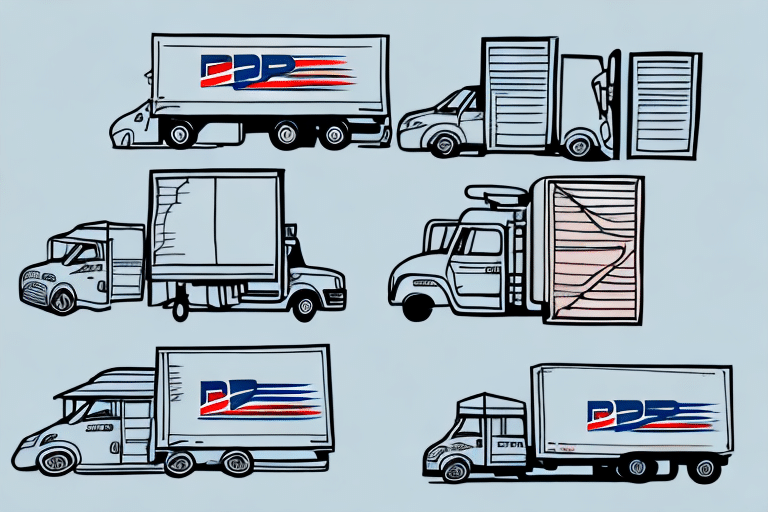Understanding UPS vs. USPS
When it comes to shipping and mail carriers in the United States, UPS (United Parcel Service) and USPS (United States Postal Service) are two of the most prominent options available. While both offer reliable delivery services, they operate under different structures and cater to varying shipping needs. Understanding their differences is crucial for selecting the right service for your specific requirements.
Overview of UPS
UPS is a private, global package delivery and supply chain management company. Known for its extensive logistics network, UPS offers a wide range of services, including express shipping, freight forwarding, and specialized delivery solutions for businesses of all sizes. With a presence in over 220 countries and territories, UPS is well-suited for both domestic and international shipping needs.
Overview of USPS
USPS is an independent agency of the U.S. federal government responsible for providing postal services across the United States. USPS offers a variety of mail and package delivery options, making it a cost-effective choice for everyday mailing needs. As a government entity, USPS enjoys universal service obligations, ensuring delivery to every address in the country.
Services Offered by UPS and USPS
Both UPS and USPS provide a range of shipping services tailored to different needs. Understanding the specific offerings of each carrier can help you make an informed decision based on your shipping requirements.
Domestic Shipping Services
UPS offers several domestic shipping options, including:
- UPS Ground: Reliable delivery within 1-5 business days.
- UPS 3 Day Select: Delivery within three business days by the end of the day.
- UPS 2nd Day Air: Delivery by the end of the second business day.
- UPS Next Day Air: Next-business-day delivery by a specified time.
USPS provides various domestic services such as:
- Priority Mail: 1-3 business days delivery with tracking included.
- Priority Mail Express: Guaranteed overnight delivery 365 days a year.
- First-Class Mail: Economical option for letters, postcards, and small parcels.
- USPS Retail Ground: Cost-effective ground delivery for larger packages.
International Shipping Services
UPS excels in international shipping with services like:
- UPS Worldwide Express: Fast delivery to over 220 countries and territories.
- UPS Worldwide Saver: Delivery typically by the end of the next business day.
- UPS Worldwide Expedited: Economical option for less urgent shipments.
USPS also offers international shipping options, including:
- Global Express Guaranteed: Fastest USPS international service with tracking.
- Priority Mail International: 6-10 business days delivery to over 190 countries.
- First-Class Package International Service: Affordable option for lightweight packages.
Additional Features and Customization
UPS provides advanced features such as:
- Signature Confirmation: Ensures packages are signed for upon delivery.
- Insurance and Valuation: Protects valuable or fragile items.
- Customs Clearance: Comprehensive support for international shipments.
- Packaging Solutions: Customized packaging for specific needs.
USPS offers:
- Certified Mail: Provides proof of mailing and delivery.
- Insurance: Coverage for lost or damaged packages.
- Authorized Shipper Program: Discounts and tools for high-volume shippers.
- PO Box Services: Secure and convenient pickup locations.
Pricing and Rates Comparison
Cost is a significant factor when choosing between UPS and USPS. Both carriers offer competitive pricing, but their rate structures differ based on various factors.
Cost Factors
UPS pricing is influenced by:
- Package weight and dimensions.
- Shipping speed and service level.
- Distance and delivery location.
- Additional services like insurance and signature confirmation.
USPS pricing considerations include:
- Package weight and size.
- Shipping method selected.
- Destination address.
- Optional services chosen.
Flat Rate vs. Variable Pricing
UPS typically uses variable pricing based on the factors mentioned above, which can provide flexibility but may require more careful calculation to determine costs.
USPS offers flat-rate options, such as Priority Mail Flat Rate envelopes and boxes. These options allow you to ship items at a fixed price regardless of weight (up to a certain limit) or destination, offering simplicity and predictability in costs.
According to the [2023 USPS Rate Sheet](https://www.usps.com/ship/pricing.htm) and [UPS Rate Calculator](https://www.ups.com/ship/rates), it's advisable to compare rates based on your specific shipment to determine the most cost-effective option.
Pros and Cons
Both UPS and USPS have their own strengths and limitations, making them suitable for different shipping scenarios.
Advantages of UPS
- Speed: Offers faster delivery options, including same-day and next-day services.
- Global Reach: Extensive international network with comprehensive customs support.
- Advanced Tracking: Provides detailed real-time tracking and delivery confirmations.
- Reliability: Known for consistent and dependable delivery performance.
- Additional Services: Offers a wide range of value-added services like insurance, signature confirmation, and specialized packaging.
Advantages of USPS
- Affordability: Generally more cost-effective for small and lightweight packages.
- Flat-Rate Shipping: Simplifies pricing for predictable shipping costs.
- Accessibility: Extensive network of post offices and convenient PO Box locations.
- Universal Service: Ensures delivery to every address in the United States, including remote areas.
- Flat-Rate Boxes: Offers free packaging for specific flat-rate sizes.
Choosing the Right Carrier for Your Needs
Selecting between UPS and USPS depends on several factors related to your shipping requirements. Here's how to evaluate which carrier best suits your needs.
Evaluating Your Shipping Needs
- Package Size and Weight: USPS is ideal for smaller, lighter packages, while UPS handles larger and heavier shipments more efficiently.
- Delivery Speed: If speed is a priority, UPS offers faster delivery options compared to USPS.
- Destination: For international shipments, UPS provides a more extensive global network, whereas USPS may be sufficient for standard international shipping.
- Cost Constraints: USPS is generally more affordable for everyday mailing needs and flat-rate shipping.
Cost-effectiveness
Compare the shipping rates of both carriers for your specific package details. Utilize online calculators provided by [UPS](https://www.ups.com/ship/rate-calculator) and [USPS](https://www.usps.com/ship/pricing.htm) to estimate costs accurately.
Delivery Speed and Reliability
Consider the importance of delivery speed versus cost. UPS is often preferred for time-sensitive shipments due to its expedited services, while USPS offers reliable services for non-urgent deliveries.
Combining UPS and USPS in Your Shipping Strategy
Using both UPS and USPS can optimize your shipping strategy, allowing you to leverage the strengths of each carrier.
Benefits of Using Both Services
- Flexibility: Choose the most appropriate carrier based on each shipment's specific needs.
- Cost Savings: Utilize USPS for smaller, cost-effective shipments and UPS for larger, expedited deliveries.
- Increased Reach: Expand your shipping capabilities by taking advantage of USPS's universal service and UPS's global network.
- Risk Mitigation: Reduce reliance on a single carrier, minimizing potential disruptions.
Tips for Maximizing Savings and Efficiency
Implementing strategic practices can enhance your shipping efficiency and reduce costs when using UPS and USPS.
Utilizing Technology
- Online Tools: Both UPS and USPS offer online tools for label creation, tracking, and rate comparison.
- Third-Party Software: Integrate shipping software like [ShipStation](https://www.shipstation.com/) to manage shipments across multiple carriers seamlessly.
- Automation: Automate shipping processes to save time and reduce errors.
Taking Advantage of Discounts and Promotions
- Business Accounts: Sign up for business accounts with UPS and USPS to access discounted rates.
- Bulk Shipping: Benefit from volume discounts when shipping large quantities.
- Promotional Offers: Stay informed about seasonal promotions and special offers from both carriers.
For more savings tips, visit [ShipScience](https://www.shipscience.com/).
Conclusion
Both UPS and USPS offer robust shipping solutions, each with its own set of advantages. By understanding the differences in their services, pricing, and operational strengths, you can select the carrier that best aligns with your shipping needs. Whether opting for UPS, USPS, or leveraging both, a strategic approach to your shipping process can lead to increased efficiency and cost savings.






















